Alabama vs. Michigan 2012– Pt. 3 - A Geographic Analysis
So far I’ve done two of these diaries looking at only the public rosters as posted by each school, free Rivals data and blogger based depth charts. Pt1 looking at height/weight and Rivals rating by position. Pt 2 looking at redshirting numbers. In this diary I’m mainly breaking down the recruiting classes by where they come from and how far they travel to come to the respective schools. A quick review and I will get on with that…
The Tide is bigger in girth and number, more Rivally, redshirty and about as elderly class wise. Their OTs are humongous. Our DEs are lithe and hopefully hard to lay hands on. Can we out play their strengths? Certainly we can. I’m interested in fall camp. The onus is on Michigan to execute and develop where expected and also early where otherwise RSing would be a good idea.
It’s frustrating given the early entry and success of Bama that they are so well off personnel-wise. Saban recruits moves and manages rosters differently and/or repugnantly in my estimation. I want to get into that but it’s just not the data or the focus of what I am doing here. It’s worthy of a diary but it’s been done before.
OK… on to the data smash that I have…
Where these guys come from isn’t really as important as what kind of players they are. But it’s interesting and speaks to who these guys are as well as where in the CFB world both schools are. Enough “ares” let’s get on with this.
A variability chart of distance to campus compared team to team…excluding the walk-ons that are not on the 2-deep...that would be Kovacs (Alabama does not have any walk-ons in the 1s or 2s except kickers and long snappers.)
Note to self - kids like to go to school near home in general. I would be interested to roll this up for all of College football. Especially in light or recent success by USC despite just deserved penalties. I take that challenge but have limitations in time.
(EDIT: Zone Left points to an article by Andy Staples in the comments that has 2004-2008 data for Div 1 schools. I rolled that up in the comments. This was a good link.)
Michigan is more spread out and and in a Florida sense – bi-modal. I highlighted the guys in the 2 deep above (they are slightly larger dots above…this shows up better in the distribution charts below where the two deep guys are darker.
The differences here are not so great for the most part. The distributions are the same in character but Michigan is clearly more spread out than Alabama in it’s recruiting territory. The red brackets below the box plots are the shortest interval that contains half the data. I think it’s interesting that despite being more spread out Michigan has a large contingent of close to home guys. This is due to our proximity to Detroit I’m sure, but Bama is close to Birmingham – not Detroit but biggish.
Overall CFB is a local sport which probably goes a long way in explaining it’s popularity. It’s just another trait that makes this sport great. Neither team here is recruiting on the national scale of USC or forward slash “S” Sparty .
Here’s a US map with push pins of the known scholarship guys who signed LOIs plus Kovacs. With a few exceptions (notably and significantly Florida) it’s a north south battle royale.
Here’s a breakdown of guys on the roster by class to see Alabama’s trends given their National Championship runs and Michigan’s distribution given our recent coaching change.
Michigan shows Pahokee nights and Detroit days, while there is only a small signal with Alabama of a wider recruiting stamp given the recent success.
Here’s the same chart with all the crucible of recruited athletes that made up the current team.
Comparing these two charts says to me Alabama did not haul in out of town talent who have since left. This is a similar team in a geographic sense to the crucible of players that has made them.
If anything these charts showcase the regional expertise and interest of the coaching staff as well as the inherent location of the schools in general. Alabama won their NCs with largely southern talent (with notable exceptions like Ingram) and will be an almost exclusive southern team come September. Hoke as well is getting it done with more local kids. Most of his guys from the west coast are kids he had a relationship with at SDSU.
Michigan is a tale of two coaches with respect to recruiting… here’s a chart showing within class adjusted for redshirts.
Here’s the 1000+ mile club for Michigan’s upperclassmen…RR guys.
Brandin Hawthorne
Brendan Gibbons
Craig Roh
Denard Robinson
Drew Dileo
Jeremy Gallon
Marvin Robinson
Mike Jones
Ricky Barnum
Stephen Hopkins
Taylor Lewan
Vincent Smith
Here’s the 1000+ guys from the lowerclassmen…Hoke guys except for Ash.
Erik Magnuson
Matt Wile
Richard Ash
Russell Bellomy
Sione Houma
Here’s the same distance to campus data with respect to position…
Our TEs are home grown but otherwise we range fairly evenly across all positions (except kickers thanks to Wile and Gibbons.) Bama is fairly constant as well by positions and relatively more local. Here’s the same data for the walk ons.
It surprised me that their walk-ons would be even slightly more traveled than Mich. I don’t think that is significant though. More interesting is the fact that they have LB walkons and we don’t. I thought about that and decided to look at walk-ons by position to gauge their fit vs. team need.
This analysis by class includes current walk-ons which as I learned in doing these diaries can screw up your data when you are too lazy to go back and research who those guys are/were. This is kind of where I left that off in the other diary.
Alabama’s walk-ons are evenly spread by position (if you breakout DBs and safeties together.) Michigan’s walk-on class complements the holes in the team roster. I’m going to be interested in seeing if any special teamers are walk-on guys for Bama. Here’s a distribution chart showing the breakdown of each team by position with the walk-ons highlighted.
Talking about walk-ons is a signal of the differences here in teams. The Tide doesn’t need any walk-on help. Mich does or at most will need Frosh to play. There are perhaps reasons Bama has more walk-ons on the spring roster (it can pay to have played for the Tide in the long run for the sake of your heirs – I doubt we will see a Sons of Saban scholarship fund – who knows) but as we saw in Pt2 they had a large contingent of EEs show up and a couple significant JUCOs to make up for NFL and normal attrition. The non EEs will show up in the fall and squash the Tides walk-ons when they cut to 105. Michigan doesn't have that issue as seen in Pt 1.
This is about as much as you can tell from looking at the rosters. The sub-plots that underlie these bullets are discussion worthy but I do have a bunch of more odd/interesting takes from the Rivals/Roster mash.
Here’s the number of videos posted on Rivals per Star.
I posted the summary analysis just because this is so off the wall. What I was looking at was if the southern talent was treated differently by Rivals. This shows a similar treatment if just in the number of videos posted per star.
HUGEtractsofland asked for a speed breakdown in Pt1. Rivals data for 40 times is sparse but I pulled it and showed it. Here it is again by position.
Here it is by roster…again this is sparse and fakey… just showing the available data in chart form. We all know how fast the SEC is (/s).
The breakdown does show a faster OL for Mich. Again this is ridiculous stuff but I do think we have a good OL that is going to get undersold to Bamas NFL like talent.
Here’s BMI vs speed for both teams…
You get the idea… Lewan and Schofield are Oregonesque in their proportion but perhaps they are more light of feet than the Tide’s OTs.
 vs.
vs. 
76 or 77 – which do you think will go higher in the draft?
Enough said about rosters. Ultimately this series of diaries shows that September can’t come soon enough.
There was a paper published in the Journal of Sports Economics in 2008 that showed BCS level players' top factor in recruiting was proximity to campus. Factors like previous ranking and academic standing were much less important.
Andy Staples discusses that here. He also points out that the of the BCS programs that won over forty games from 2004-2008, 16 of the 22 had over 50% of their rosters come from within the school's home state or 200 miles of campus.
Also, Lewan and Fluker are awesome, but I really think Lewan is a better left tackle and thus, a better draft prospect. Lewan moves so well for a guy his size.
Here is the subset of that data without wins (for which I don't see a correlation.)
Michigan is more local now comparably
Alabama less - though still more than Michigan
Caveats-
- This is from 2004-2008.
- These are Andy Staples' numbers - ZLs link is worthy of clicking through...
| School | Avg. Distance |
| Stanford University | 1344.00793 |
| Oregon State University | 929.730224 |
| University of Colorado | 888.996842 |
| University of Oregon | 842.746667 |
| University of Nebraska | 767.022937 |
| Washington State University | 715.989333 |
| University of Arizona | 678.945739 |
| Kansas State University | 675.969429 |
| Duke University | 663.27625 |
| University of Washington | 661.407273 |
| Iowa State University | 648.736045 |
| University of Notre Dame | 640.809307 |
| University of Minnesota | 600.973445 |
| Boston College | 568.338614 |
| University of Kansas | 561.643217 |
| University of Michigan | 547.289907 |
| University of California-Berkeley | 532.620841 |
| Purdue University | 508.190342 |
| Northwestern University | 508.063371 |
| West Virginia University | 506.744762 |
| University of Miami | 499.007589 |
| Arizona State University | 498.599914 |
| University of Southern California | 486.1046 |
| University of Louisville | 480.432477 |
| University of Connecticut | 479.937581 |
| University of Tennessee | 464.756435 |
| University of Kentucky | 458.271231 |
| University of Iowa | 456.225 |
| University of Wisconsin | 453.709407 |
| Texas Tech University | 449.523814 |
| University of Missouri | 443.270684 |
| Michigan State University | 402.678833 |
| Oklahoma State University | 386.171345 |
| University of Oklahoma | 385.910893 |
| University of Illinois | 379.573051 |
| Rutgers University | 365.543909 |
| North Carolina State University | 361.212 |
| University of Florida | 359.728291 |
| University of Mississippi | 359.638702 |
| Wake Forest University | 357.356957 |
| Syracuse University | 351.669068 |
| Vanderbilt University | 349.564039 |
| Indiana University | 318.386944 |
| University of Pittsburgh | 314.569035 |
| The Ohio State University | 314.344316 |
| University of Arkansas | 313.929695 |
| Florida State University | 308.5392 |
| University of North Carolina | 301.803333 |
| University of Cincinnati | 294.642359 |
| University of California-Los Angeles | 293.983168 |
| Georgia Institute of Technology | 281.466598 |
| Auburn University | 263.991069 |
| Louisiana State University | 259.315304 |
| University of South Carolina | 258.028504 |
| Texas A&M University | 246.922773 |
| Clemson University | 244.383839 |
| Penn State University | 242.878039 |
| University of Virginia | 236.020874 |
| Mississippi State University | 231.789291 |
| University of Maryland | 223.647905 |
| Virginia Polytechnic Institute | 222.513362 |
| University of Alabama | 211.49397 |
| University of Georgia | 206.874953 |
| University of Texas | 191.406893 |
| Baylor University | 186.400536 |
| University of South Florida | 160.171849 |
By wins from that table...
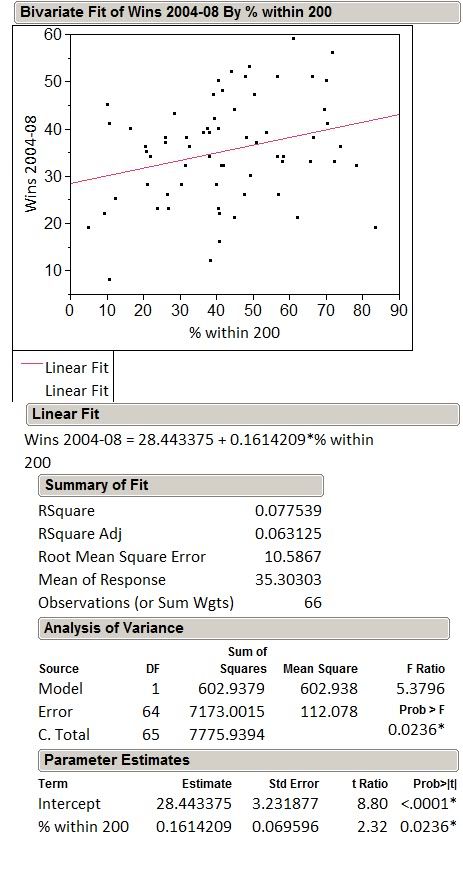
Proximity to recruiting hotbeds is the most significant take home I'm seeing here. West coast teams are reaching east, southern and midwestern teams are staying home.
Demographic changes favor southern teams if proximity remains king. This article on ESPN by Paula Lavigne talks a bit about that. Ohio is stil a hot bed regardless. I'm not sure how seriously I take that though. Football is changing pretty fast with recruits getting contacted earlier and with data being available at the touch of a mouse.
USC is certainly pulling from across the country as does Oregon (though I haven't looked at that closely.) In defense of Hoke he's just missed on long distance guys up to this point.
I strongly feel the largest factor for success in CFB is player/team dedication and good coaching. When Zettel went to PSU because he felt it would give him a better path to the league that was disheartening (I'm sure there was more to it than just that.) I think more of the top notch guys southern or not are going to start looking at coaches and facilities farther from home.
Fluker plays and projects to RT IIRC but both OTs are NFLers for the Tide this year. And I think Lewan is better than either one.
I'm referring to the sentence immediately below:
"I strongly feel the largest factor for success in CFB is player/team dedication and good coaching." These are, indeed, the logical factors one would jump to is assessing the haves from the have-nots of cfb. However, I feel at this point in the ever changing world of cfb, the largest factor for success is that one league operates at a completely different level than do all others.
Because the NCAA cannot, or will not,-really don't know which of these two are correct, the SEC by and large routinely and blatantly ignore the oversigning guidelines as established by this governing body and is non ambiguous in its reading. However, the SEC continues to ignore this policy and routinely offers scholarships to every good prospect within that area of the country. Because football is the focus of the SEC, instead of a reasonable mix of academics and sports, something most leagues attempt to bring about, this has caused an ever widening gap between the SEC and the rest of the cfb world.
Hell, scholarships are offered without thought to high school academic achievement with the mindset that obviously a large number of great talents will not step inside an institution of higher learning, but by offering so many, we will only have to occasionaly rescinding the offer we made to a certain kid - strictly business in that part of the country - because "Damnit, YA'All, we had two more than planned on qualifying this year.
This has cause the SEC to turn into the equivalent of a Triple A farm team, loaded with great coaching, preparing these young men for their eventual trip to the bigs. This hasn't ruled out the occasional school tht slips in from the Double A leagues such as the BIG and XII, but I think its existence far outweighs the factor you listed in your tremendously well researched and great presentation.
Your most recent addition to this site obviously is a result of a tremendous amount of thought, research,and most importantly, time. Greeat job.
Thanks Wolfman...Let's not forget that it is incumbent on any champion to prove it's caliber every year. If the SEC is better then they need to prove that on the field. It's possible they aren't this year. A well-coached enthusiastic team beats a poorly coached and/or sloppy team every time. I don't want to start a battle but if we didn't square Denard to our round offense, I'd peg Michigan in this game by a touchdown or more. But that is water long under the bridge.
Talking to an SEC fan or advocate about over signing is like talking to a Barclay’s executive about gaming the LIBOR. They just don't get it. They think they are doing these kids a service. The ones who succeed are being served. The marginal ones are not. McNutt over signed quite a few guys but those teams aren't the stuff of legend.
I pulled the attrition rates and walk-on numbers for the B1G, SEC, Pac12 and Big12 to look at personnel management. I have a diary in mind there but it's fraught with more categorical issues than the positional analysis here. The problem is the data isn't privy to the choices made by these athletes, coaches or the academic institutions. Most all of the issues have been brought up before in other posts or articles. In the end it is probably too much work for too little gain.
Over signing is not as large an issue now that the SEC rolled back their allowed signees to 28 in 2009, but over signing is still an issue if you have 18 to give and then sign 23. Telling who has what to give is not easy when you don't follow the team like you do your own. Alabama is still benefiting in granted redshirts, grayshirts and deferred athletes who have comeback as JUCOs. Several blogs and media-ites have deconstructed that class individually. The effect of all the large classes together 2008 to 2012 has produced the balance that is Alabama 2012. Michigan suffered a few lackluster classes but has otherwise signed just about as many kids on the good years.
The biggest difference in the rosters is in the JUCO policy. Michigan would do well to establish a transferable kinesthesiology curriculum at Grand Rapids CC. I looked at that awhile back and I don't think there is a possible path for an athlete to follow there to get into Michigan. If we are going to take a JUCO he pretty much has to figure out his path on his own evidently. Certainly Michigan is not signing guys and "placing" them which is standard practice in the SEC (I think Nebraska has done this as well.)
The opportunities at other top 40 programs will become more apparent as the information that the recruits have going into the process becomes more apparent to the recruits and their families. Opportunity, coaching and facilities will make the difference to these athletes in the long run IMO.
Tremendous diary. A good data dump is a feast on the eyes. Then you started breaking it down by class adjusted for redshirt and it went up to 11. It felt like reading published scientific literature.
Keep up the great work!
We all know that the Tides defense is the bread and butter. So physical, so well coached, and so strong up front, it's no wonder why they can plug in anyone at qb and play for titles year in and out. Watching them on film is crazy. It's the closest thing to an nfl defense that we see in the NCAA. Four things that can lead to success against the Bama defense are as follows. Win first down. Always be in 2nd & 7 or less to keep the playbook completely open. Another thing you can do is to be unpredictable on first down. Run from the gun, pass from under center, screen plays, play action, and even a draw or two will help offensively. So many times teams are so worried about being in 3rd&long against Bama that they are very predictable in first down play calls. The third thing necessary for success is to stay out of the vaunted 3rd&long that I just spoke of. Sooner or later a 3rd&long becomes a turnover or a huge edge in field position. The last two things necessary for success are to control the time of possession, and get the ball to the playmakers in space.
Looking at how we stack up against Bama I think it's fair to say that we have an offense that can get our athletes in space. I also think that our speed at quarterback gives us a dimension that Bama is not used to. My biggest concern is our defensive line. The size and physicality of their offensive line will be a problem with our lack of quality depth. It's imperative to win the special teams battle, which I think we will. The best thing about this game is its the first one. Michigan will have some wrinkles that Bama isn't ready for and Bama will most assuredly be the same for the most part. They are who they are and they're not going to change it. If we can stop the run and force them to pass 25+ times I think that bodes well for us with our speed at DE. I think we have a real shot with this one. If Denard completes 60% I think we come out of the jerry done 27-24 victors. If Denard struggles then Bama will dictate things in a 24-13 win. Either way it's nice to play the best because if you want to be the best you have to beat them.


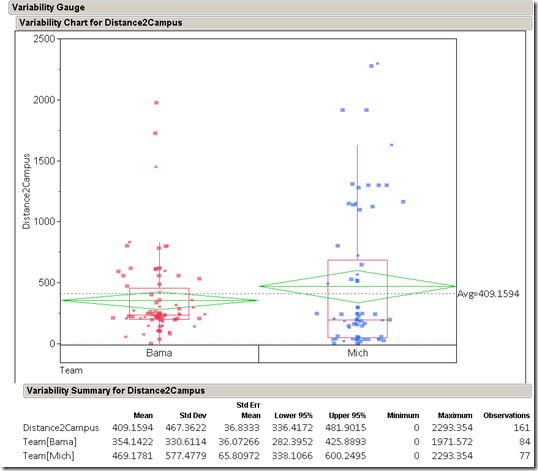
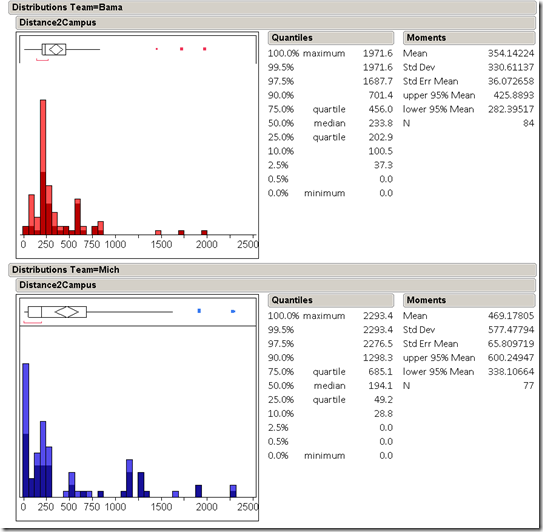
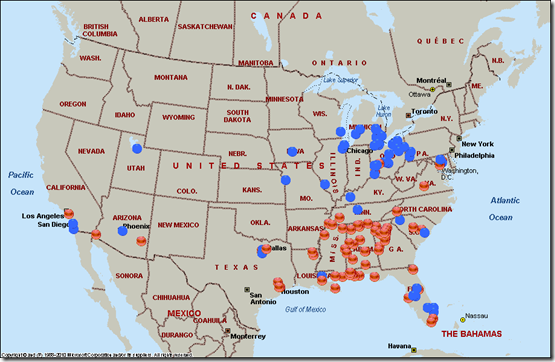

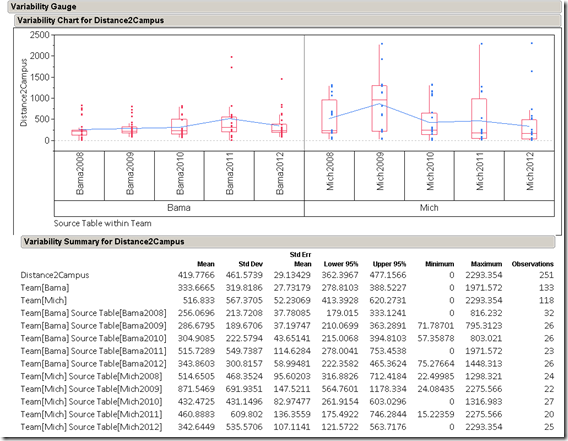

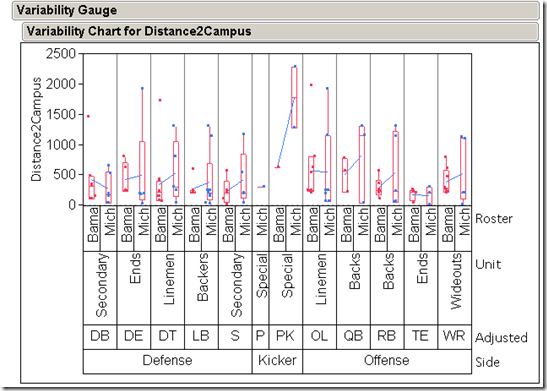
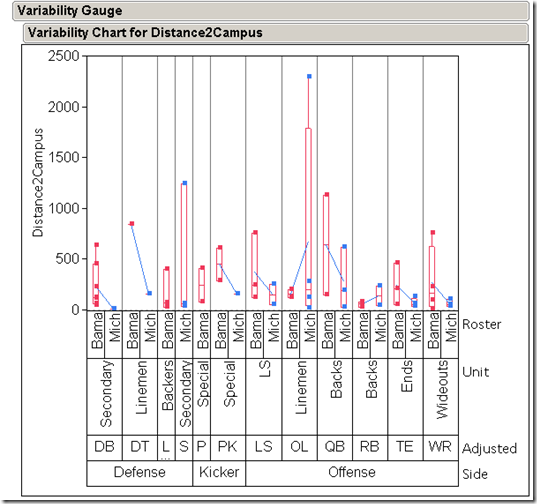
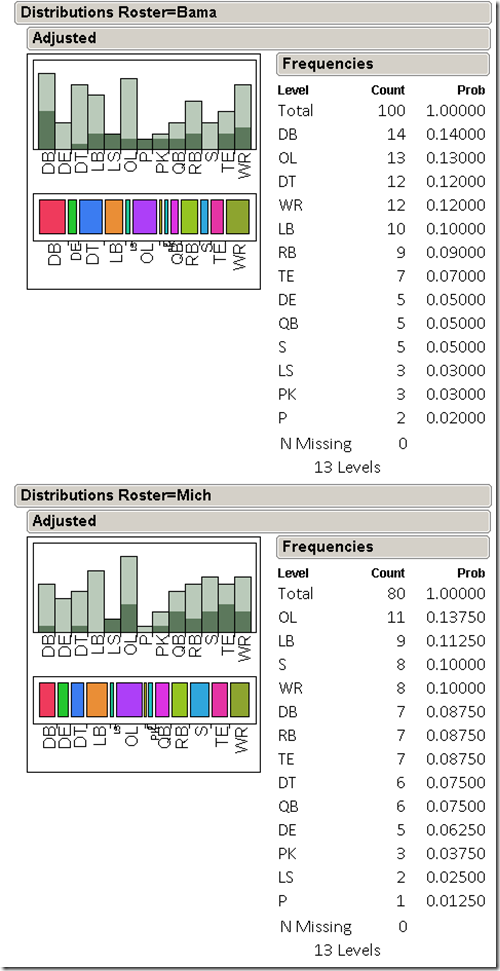

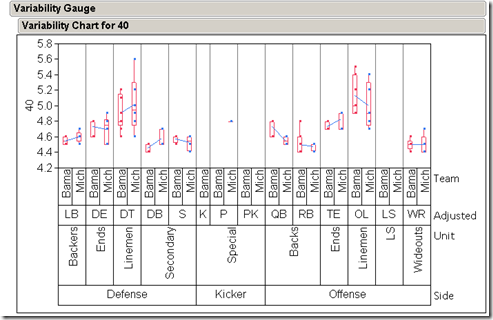
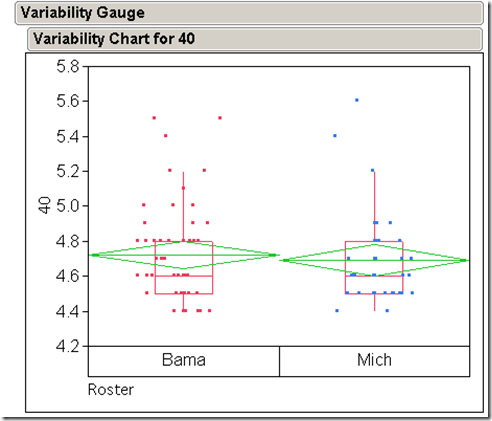
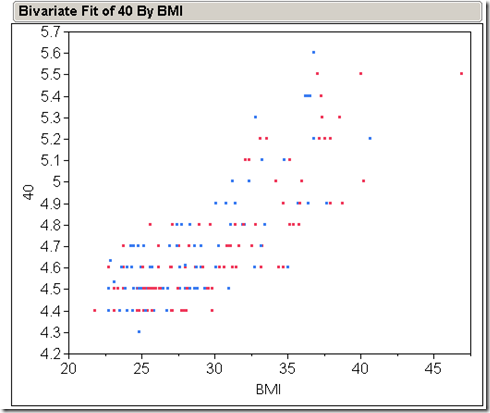
Comments